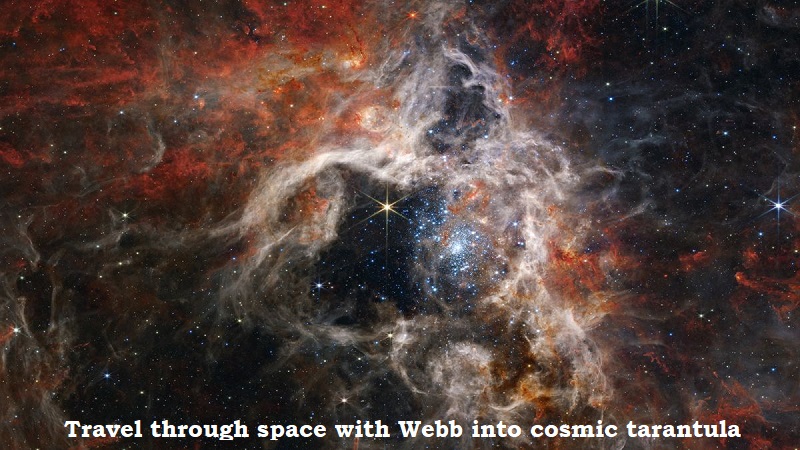
As it probes the Tarantula Nebula, the James Webb Space Telescope has sent back fresh photographs from the furthest reaches of space. The most powerful observatory in the world has peered deeply into the celestial nursery, revealing young stars that had previously been concealed and never before seen.
Nearly 15,00,000 kilometres from Earth, the spacecraft discovered new stars in the Tarantula Nebula, also known as the 30 Doradus stellar nursery. The Hubble telescope had previously recorded photographs of these stars as dusty filaments.
The largest and brightest star-forming region in the Local Group, the galaxies closest to our Milky Way, is the Tarantula Nebula. It is just 1,61,000 light-years from Earth and contains the most massive, hottest stars known to science.
The Tarantula Nebula has long been one of astronomers’ favourite places to focus their attention, but the Webb telescope has also revealed distant background galaxies and the precise structure and makeup of the nebula’s gas and dust.
The Near-Infrared Camera, Near-Infrared Spectrograph, and Mid-Infrared Instrument were three of the spacecraft’s instruments that were used to zoom into the nebula. Astronomers are interested in the region because it resembles the massive star-forming regions seen at the universe’s “cosmic noon,” when star creation was at its pinnacle and the cosmos was only a few billion years old.

Post Your Comments